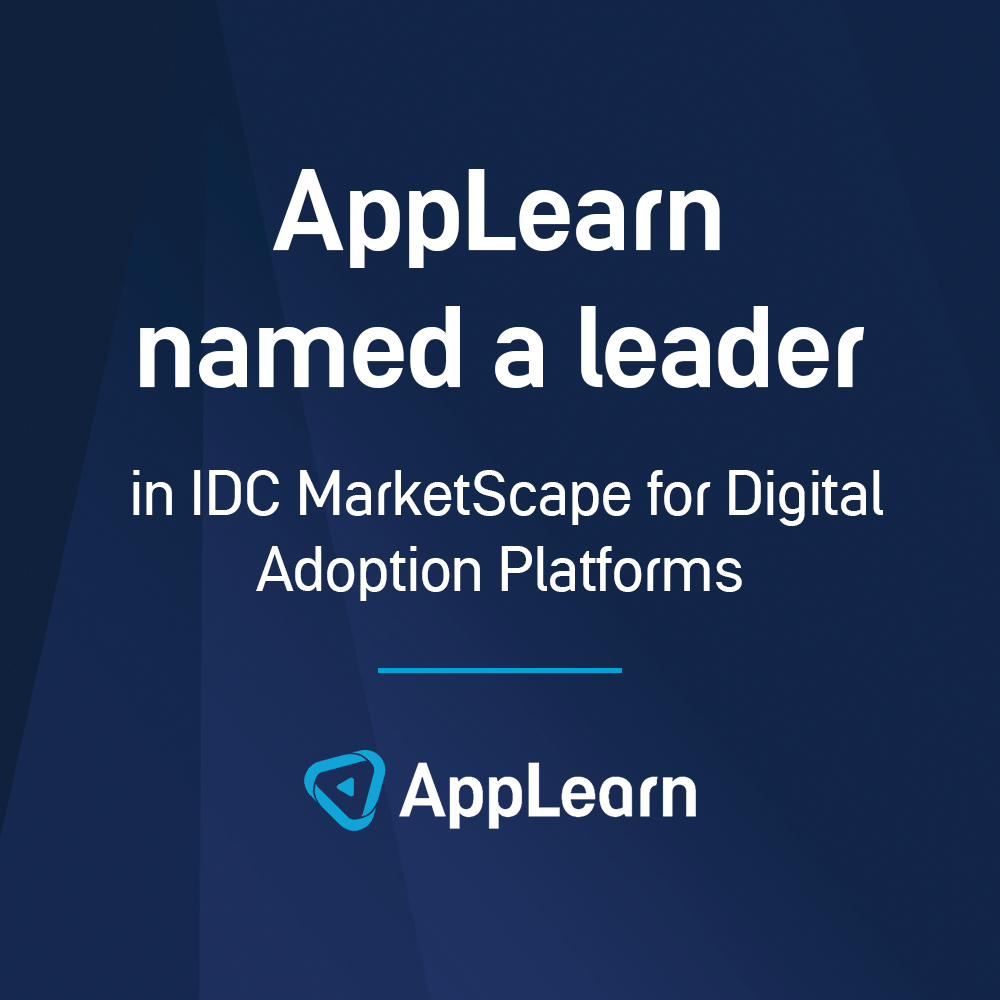News
Imagining the future of work (and preparing for it)
Imagining the future of work (and preparing for it)
Not since the dawn of the internet has the nature of work come under greater scrutiny than today. With the pandemic accelerating the journey towards remote and hybrid models of working, cloud-based technologies delivering an endless supply of highly functional and flexible tools, and generative artificial intelligence seeping into a range of projects and tasks, what the future might hold for the world of work is amongst the hottest of topics.
Although the full impact of these developments remains unclear, agreement across the corporate world is unanimous that emerging technologies and how the workforce is able to use them are forming the foundation of a new professional landscape.
In this piece, we look at how digital adoption platforms (DAPs) are being used by organizations to maximize their technology investments and give their employees the best possible chance of reaching their potential and, thus, the potential of their organization.
Digital adoption platforms – a brief overview
Historically, organizations that needed to train their workforce on new software or applications had three options at their disposal. Arrange in-person training sessions, produce supporting documents, or simply leave employees to figure it out themselves.
Training educates, but the human attention span is short in the context of in-person, legacy methods and any learning is soon forgotten unless it's regular and provides practical activities. Documents standardize practice but age fast, and navigating through them breaks the flow of work and impacts productivity. And don’t forget the lack of intrinsic motivation. Employees simply do not want to navigate multiple applications every day just to be able to do their job.
All are united in their inability to deliver metrics that allow leaders to reliably determine which software is being used and to what degree of competency.
DAPs have emerged as the fourth option. Providing a single pane of glass with comprehensive in-app guidance, your people can instantly access all the up-to-date help they need without overwhelming them or admin teams. Pop-ups can be configured to appear on screen and react to user issues rapidly, existing materials can be placed into workflows, and a range of metrics can be targeted, such as average task completion times.
Moreover, DAPs can stitch your entire tech stack together creating a single support experience, meaning users no longer need to learn multiple different interfaces.
Essentially, all employees have their own personal training guide who walks them through unfamiliar application features to rapidly boost their competency and, ultimately, their productivity.
Using DAPs to prepare for the future of work
From sole traders to multinational conglomerates, current working environments rely on at least some form of digital technology. Indeed, organizations with more than 1,000 employees typically use more than 150 SaaS applications. As the years progress, this reliance is only going to deepen.
DAPs are famed for their ability to boost the user experience of any integrated application by offering advanced features like real-time guidance, contextual assistance, and data-driven insights. As the future of work becomes more centered around digital tools, providing a user-friendly experience that reduces learning curves is essential for employee satisfaction and productivity.
However, DAPs prepare organizations for the future of work by doing more than simply providing employees with clear, responsive, real-time guidance for the applications they use. DAPs are also an emergent technology, and as they become enabled with sophisticated AI and machine learning capabilities, their deployment across sectors is likely to be widespread.
With a DAP integrated into an organization's technology estate, they can:
Adapt to remote and hybrid work models: Pandemic-induced global lockdowns took the mooted concept of remote working and hauled it into the present day. Remote and hybrid working models have since become normalized across multiple sectors, and the future of work is expected to be even more flexible. Younger generations especially have little desire to return to the office full-time, and the agility afforded by flexible working means that bosses have little incentive to challenge them.
DAPs can ease the adaptation to remote hybrid work models by ensuring that guidance and support are always available to employees irrespective of their location. As well as fostering a consistent experience, leaders can be confident that employees are not sitting at home, agonizing over how to use the various tools and features of new or updated applications. We’ve seen a DAP directly result in fewer support tickets for ‘tier zero’ requests time and time again for customers. For a global pharmaceutical company, this reduction led to a $25,000 saving over the course of a year.
Facilitate change management: With the pace of digital transformation gathering speed, organizations must adopt new software and applications often. DAPs can support this change management by easing the transition between different systems and minimizing resistance to new technologies.
This is especially beneficial in a future where new software will continue to proliferate as DAPs offer a more efficient way to bring employees up to speed and allow organizations to adopt new technologies faster. When DAPs are used as part of onboarding new users, users become proficient in the core tasks of the system three times faster when compared to users supported via traditional training methods alone, they get to the end of processes twice as often and complete them on average in half the time.
Enable data-driven decision making: As well as providing in-app training on tools and features, DAPs also provide insights into how employees use different software. This information can determine which applications offer the most value to the organization, allow for more targeted guidance to be directed to problem areas, and highlight areas where improvements are needed.
Such a data-driven approach will be critical in the future of work as businesses continue on a relentless drive towards ever greater efficiency and optimization.
Promote a culture of continuous learning: Employees must be empowered to adapt quickly to new tools and features in a future work environment dominated by new and evolving technologies.
DAPs promote a culture of ongoing learning and self-service that aligns with this environment by allowing employees to grow in their roles as they evolve and new skills become essential. Infrequent processes often result in the biggest number of errors and rework, and when continuous support is offered via a DAP rework is hugely reduced. A global drink brand saw errors relating to the time off processes drop by over 20% in the three months after in application guidance was introduced.
Offer significant ROI on tech investments: By improving the rate of digital adoption, DAPs allow organizations to maximize the ROI on their tech investments.
In a future where leveraging the full potential of new technologies will become a major differentiator, the returns a DAP can offer will give those organizations using them a clear competitive edge.
Achieving successful digital workplace success
As organizations prepare for a fully digitized future world of work, user resistance could become a primary obstacle on the path towards successful digital transformation projects. Before changes are implemented, it is crucial to consider how users will be impacted and which processes must be put in place to ensure users are educated and supported.
By deploying in-app guidance and support, you can facilitate the smooth transition and continuous adoption of new technologies. Not only will a DAP help users build software knowledge, adapt to change quickly, and create a unified experience, but it will even allow you to proactively position support where it will have the most impact. Indeed, with the right DAP investment, you can bring the future of work into the workplace of today.
Article by
Adam McVey
Share this article





